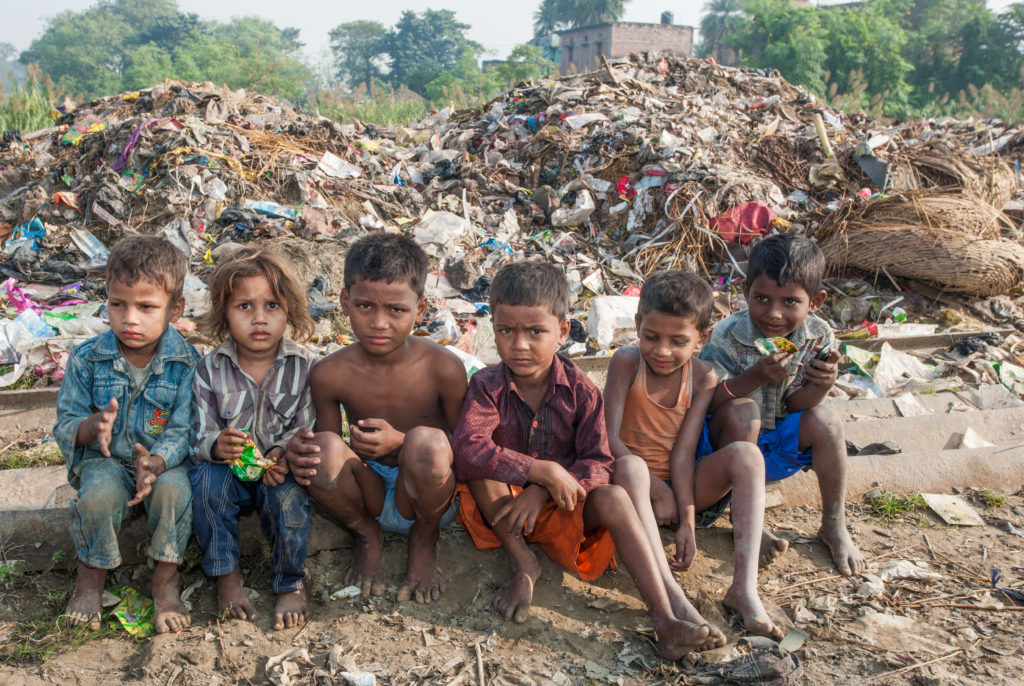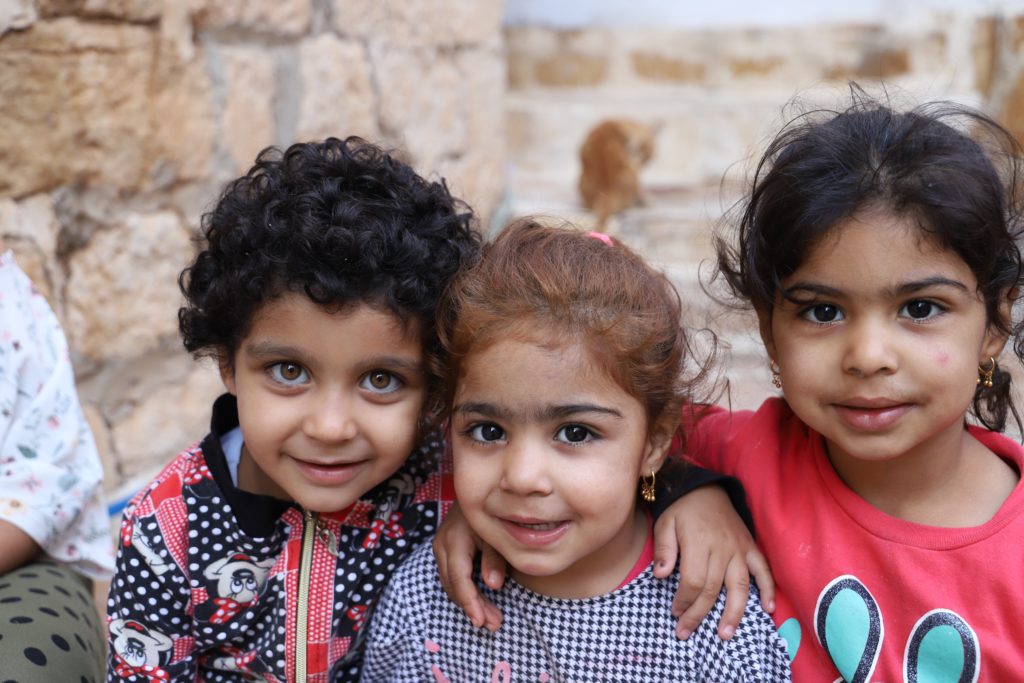Children across the world are left homeless and forced onto the streets to fend for themselves due to numerous reasons, primarily poverty, war, previous violence and abuse, exploitation, and desperation. Once on the streets, children can become further trapped in new and repeated cycles of poverty, crime, maltreatment, and neglect.
Not only are they more exposed to potential health risks while living on the streets, but homeless children are often targeted by criminal gangs due to their vulnerable and unprotected status. All children have the right to an adequate standard of living and to be protected from a dangerous life on the street.

Defining street-connected and homeless children
The United Nations Committee on the Rights of the Child defines street-connected children as: “(a) children who depend on the streets to live and/or work, whether alone, with peers or with family; and (b) a wider population of children who have formed strong connections with public spaces and for whom the street plays a vital role in their everyday lives and identities. This wider population includes children who periodically, but not always, live and/or work on the streets and children who do not live or work on the streets but who regularly accompany their peers, siblings or family in the streets” (United Nations Committee on the Rights of the Child, 2017).
While homelessness has no strict definition within international law, various international bodies including the Institute of Global Homelessness, United Nations, and the European Federation of Organisations Working on Homelessness (FEANTSA) understand the term to include: “Persons living in the streets, in open spaces or cars; persons living in temporary emergency accommodation, in women’s shelters, in camps or other temporary accommodation provided to internally displaced persons, refugees or migrants; and persons living in severely inadequate and insecure housing, such as residents of informal settlements” (OHCHR, 2021).
The global scale of street-connected and homeless children
There is no universally accepted approximation of the number of street-connected and homeless children in the world. Accurate data is difficult to capture given these children are typically unknown to the state and unmonitored. Research conducted by the United Nations Educational, Scientific and Cultural Organisation (UNESCO) in 2016 estimates there are around 150 million street children in the world (Compass Children’s Charity, n.d).
Drivers of street-connected and homeless children
Listed below are The Consortium for Street Children’s definition of the most common drivers of street-connected and homeless children (Consortium for Street Children, 2022).
- Poverty – children from impoverished homes may be forced to the streets in order to generate income or locate sources of food for themselves and their families.
- Parental or carer deaths – children left orphaned by the loss of their parents or primary carers may be rendered homeless unless national care systems provide adequate support.
- Parental neglect – children neglected by their parents or primary carers may be left with no choice but to turn to the streets to provide for themselves.
- Violence and abuse of children at home or within communities – children who are victims of abuse at home or within their local communities may flee to the streets for safety.
- Sexual, physical or emotional abuse – children who have been victims of various forms of abuse may flee to the street for safety.
- Urbanisation – the expansion of cities and urban areas has created population swells and crowding, with many governments unable to provide adequate services to address this growth. Children in areas thus face greater risks of poverty and homelessness.
- HIV/AIDS – children with HIV and AIDS may be abandoned or shunned by their families and communities, leaving them homeless and without adequate shelter.
- Forced criminal activity – children can be used as tools to carry out organised and disorganised crimes for money, such as theft, drug trafficking and prostitution.
- Being rejected from their family for so-called “moral” reasons – children may be abandoned by their families when they are deemed to be the product of an ‘immoral’ relationship or have conducted ‘immoral’ acts, forcing them to the streets.
- Mental health – children suffering mental health issues may choose to leave their communities if they are not supported or be forced away from them where their conditions are stigmatised.
- Substance abuse – children with substance abuse issues may turn to the streets to satiate their addictions or be forced out of their homes due to their abusive tendencies.
- Sexual orientation or gender identity – children whose gender identity is not accepted by their communities may turn to the streets to avoid being discriminated against and stigmatised.
Beyond these common drivers, children also find themselves homeless due to:
- War and conflict – civil unrest, insurgencies and wars can decimate communities leaving children homeless (Child Hope, 2022).
- Environmental displacement – natural disasters, global warming and climate-change related crises can displace and destroy communities, leaving large numbers of children without homes unless governments are able to provide support (Child Hope, 2022.
Challenges faced by street-connected and homeless children
There are several challenges and human rights violations that street-connected and homeless children are particularly vulnerable to including: child trafficking, violence and exploitation, recruitment for war and conflict, discrimination, and a lack of basic rights in accessing health, education, adequate living conditions and food (United Nations Human Rights Council, 2011).
Right to health
Street-connected and homeless children are susceptible to several serious health problems which include HIV/AIDs, sexually transmitted diseases, drug and alcohol dependence, and exposure to harmful chemicals and pollutants as a by-product of their living environments (United Nations Human Rights Council, 2011).

Prior to the COVID-19 pandemic, asthma, poor nutrition and respiratory diseases such as pneumonia were common amongst street-connected and homeless children. During the COVID-19 pandemic, the preservation, promotion and protection of the right to health and the accessibility of adequate health care services of street-connected and homeless children was impacted in several ways. Street-connected and homeless children were disproportionately impacted from accessing basic needs such as health care, adequate sanitation, clean water and food, and support from the justice system (Consortium for Street Children, 2020).
Street-connected and homeless children often struggle to access basic health services despite being more susceptible and exposed to various diseases such as the COVID-19 pandemic. There are several risk factors that left street-connected and homeless children vulnerable to the pandemic, which include lack of access to clean water, adequate sanitation, inability to social distance or self-isolate due to their living conditions (Consortium for Street Children, 2020).
Right to education
Street-connected and homeless children are presented with unique barriers that prevent them from accessing education. They are often invisible to state systems as they are without a permanent address or valid identification documents.
Street children also frequently miss years of school and find it harder to reintegrate into earlier school years. Those who are able to join school systems face discrimination, stigmatisation and marginalisation at the hands of educators and students (Clark, 2019).
Educational institutions, even when ‘free’, often have a number of hidden costs such as school uniforms, stationery and textbooks. This further prevents street children from accessing school systems unless they are able to afford these costs and can sacrifice the time away from income-generating activities. It is unrealistic to expect impoverished street children to be able to attend full-time education if they also work to earn their living (Clark, 2019).
Child trafficking
Child trafficking is both a driver and product of street-connected children and homelessness. Trafficking displaces children from their communities and often leaves them homeless. Children who are already living on the streets are vulnerable to exploitation at the hands of traffickers as they lack identification documents and the protection of their parents. Street children are also vulnerable to deception and girls in particular are targeted by traffickers for prostitution and used as sex workers. (Consortium for Street Children, 2020).
Violence and exploitation
Due to their vulnerable position, street children can get trapped in a cycle of violence and exploitation. These kinds of abuses at home and within communities drive children towards the street to escape harm.
However, once on the street, children are exposed to even higher risks of exploitation and violence without the protection of their communities (Consortium for Street Children, 2020). Violence can be conducted by criminal actors who use vulnerable children to generate profit, or at the hands of ordinary citizens who view street children as worthless and lacking value.
International Day for Street Children

International Day for Street Children was first launched on 12 April 2011, by the Consortium for Street Children. It is a globally recognized day that acknowledges the plight of street children around the world. This day aims to raise awareness on millions of street children around the world and the recognition of their rights (Global Dimension, n.d).
Key documents and international legal instruments
There are various international legal instruments that recognize and respond to the plight of street-connected and homeless children. In particular:
- General Comment No. 21 (2017) on children in street situations;
- Convention on the Rights of the Child;
- African Charter on the Rights and Welfare of the Child;
- Inter-American Court of Human Rights.
Written by Vanessa Cezarita Cordeiro
Internally proofread by Aditi Partha
Last updated on 19 February 2023
References:
Child Hope. (2022). “Street children: children who depend on the streets to live and/or work.” Retrieved from Child Hope, accessed on 18 February 2023.
Clark, J. (2019, September 27). “Realising street children’s right to education.” Retrieved from Consortium for Street Children, accessed on 15 February 2023.
Compass Children’s Charity. (n.d). “Street children worldwide.” Retrieved from Compass Children’s Charity, accessed on 18 February 2023.
Consortium for Street Children. (2020, April 30). “COVID-19: The right of street children to the highest attainable standard of health.” Retrieved from Consortium for Street Children, accessed on 15 February 2023.
Consortium for Street Children. (2020, February 19). “Welcoming every child protected against trafficking (ECPAT) to the CSC network.” Retrieved from Consortium for Street Children, accessed on 18 February 2023.
Global Dimension. (n.d). “International day for street children.” Retrieved from Global Dimension, accessed on 15 February 2023.
United Nations Committee on the Rights of the Child. (2017, June 21). “General Comment No. 21 (2017) on children in street situations.” CRC/C/GC/21. Retrieved from United Nations Committee on the Rights of the Child, accessed on 5 February 2023.
United Nations Human Rights Council. (2011, May 12). “Summary of the full-day meeting on the rights of the child report of the United Nations High Commissioner for Human Rights.” A/HRC/17/46. Retrieved from United Nations General Assembly, accessed on 15 February 2023.
United Nations Human Rights Office of the High Commissioner. (2021). “Homelessness and human rights Special Rapporteur on the right to adequate housing.” Retrieved from United Nations Human Rights Office of the High Commissioner, accessed on 18 February 2023.

